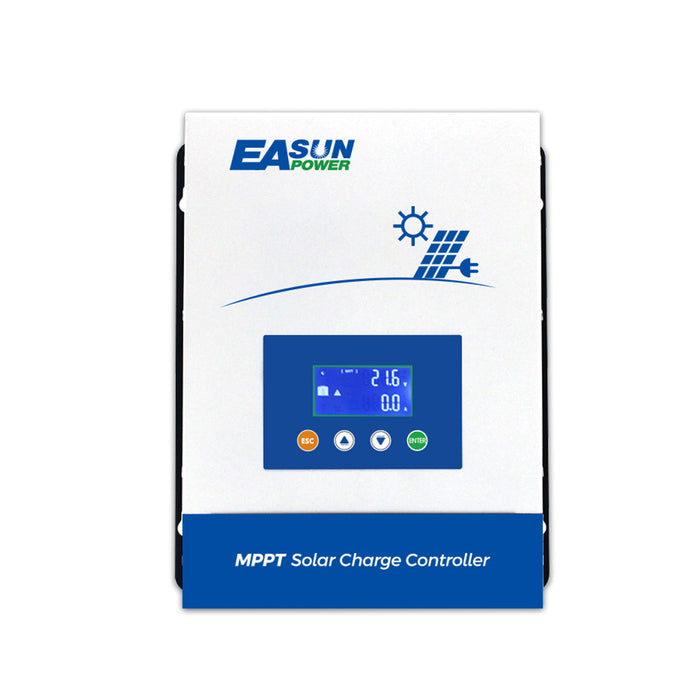- Solar controller link order: first connect to battery; then connect to PV array; finally connect to load appliance.
- Don't connect inverter, wind, alternator charger into the charge controller! Please connect the solar controller to the battery.
- If solar PV input voltage lower 3V or lower than batteries’ voltage. It may be appears to have been discontinued.
- Parameter Setting:Floating voltage > Low voltage reconnect > Low voltage discharge.
- When controller makes buzzing because the controller dissipate heat. It will be stop when temperature return to normal.
- Don't let the positive (+) and negative (-) terminals of the battery touch each other.

Easun 100A MPPT Solar Charge Controller 12V‑48V Auto LCD 150V Max
100A MPPT Solar Charge Controller — Fast, Efficient & Safe Charging
- Ultra‑High Efficiency: MPPT tracking ≥99%, conversion efficiency ≥98.1%, max solar power utilization
- 4‑Stage Smart Charging: Bulk / Boost / Float / Equalizing → faster charging, +30% battery lifespan
- Full Protection: 4 safety layers: short‑circuit, reverse polarity, overload, open‑circuit + auto 12/24/36/48V detection
- Powerful & Scalable: Handles up to 100A, supports small to large PV systems
- Smart LCD Display: 4‑button control, live voltage/current/system status in one glance
- Wide Battery Support: Compatible with Flooded / AGM / GEL / Lithium, ideal for home, RV, boat, off‑grid
Free Shipping
Free standard shipping on all orders
3-7 business days delivery
3 Years Warranty
Backed up by technical support within 24hrs.
Free Returns
30 Days Hassle Free Returns.

























